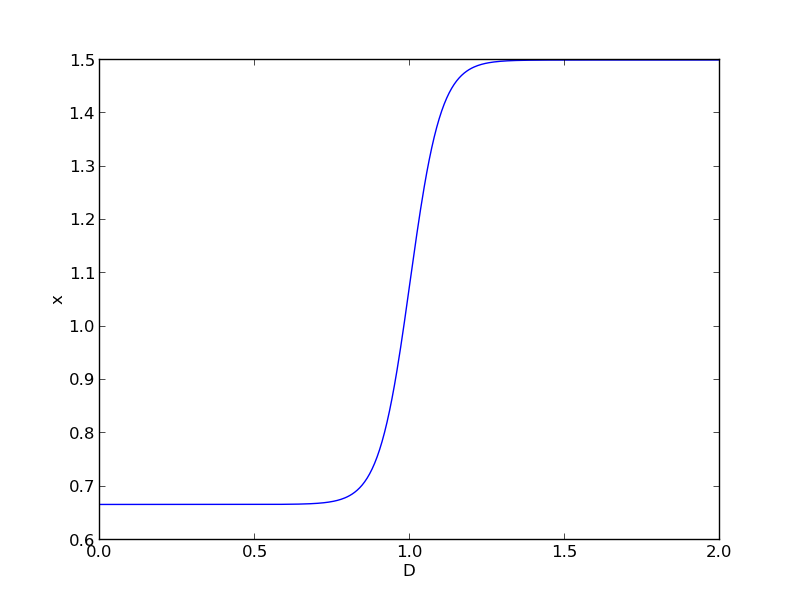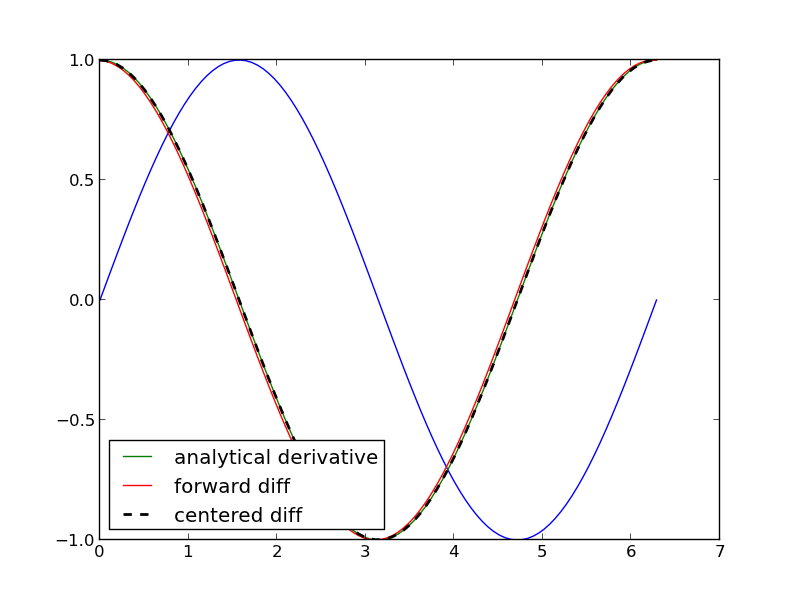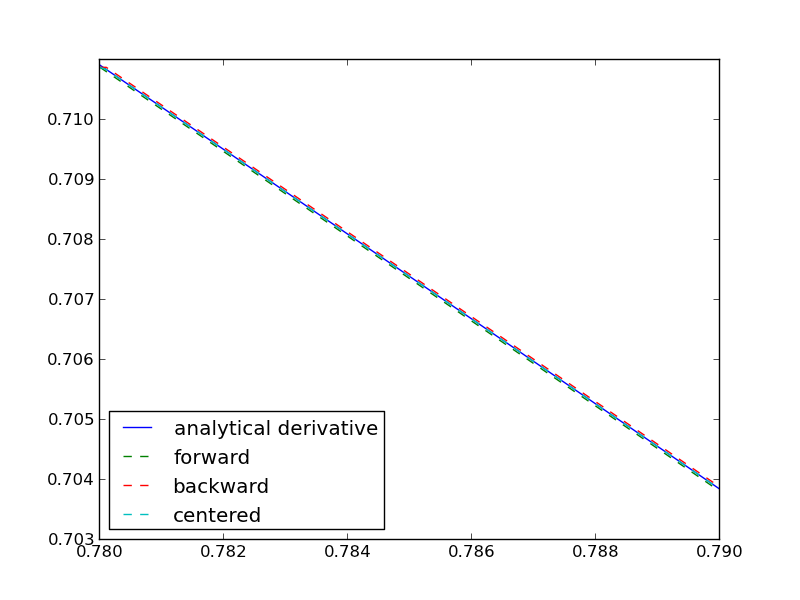Matlab post
Adapted from http://biomedicalcomputationreview.org/2/3/8.pdf and
http://dl.acm.org/citation.cfm?id=838250.838251
This posts introduces a novel way to numerically estimate the derivative
of a function that does not involve finite difference schemes. Finite
difference schemes are approximations to derivatives that become more and
more accurate as the step size goes to zero, except that as the step size
approaches the limits of machine accuracy, new errors can appear in the
approximated results. In the references above, a new way to compute the
derivative is presented that does not rely on differences!
The new way is: \(f'(x) = \rm{imag}(f(x + i\Delta x)/\Delta x)\) where the
function \(f\) is evaluated in imaginary space with a small \(\Delta x\) in
the complex plane. The derivative is miraculously equal to the imaginary
part of the result in the limit of \(\Delta x \rightarrow 0\)!
This example comes from the first link. The derivative must be evaluated
using the chain rule. We compare a forward difference, central
difference and complex-step derivative approximations.
import numpy as np
import matplotlib.pyplot as plt
def f(x): return np.sin(3*x)*np.log(x)
x = 0.7
h = 1e-7
# analytical derivative
dfdx_a = 3 * np.cos( 3*x)*np.log(x) + np.sin(3*x) / x
# finite difference
dfdx_fd = (f(x + h) - f(x))/h
# central difference
dfdx_cd = (f(x+h)-f(x-h))/(2*h)
# complex method
dfdx_I = np.imag(f(x + np.complex(0, h))/h)
print dfdx_a
print dfdx_fd
print dfdx_cd
print dfdx_cd
1.77335410624
1.7733539398
1.77335410523
1.77335410523
These are all the same to 4 decimal places. The simple finite difference is the least accurate, and the central differences is practically the same as the complex number approach.
Let us use this method to verify the fundamental Theorem of Calculus, i.e.
to evaluate the derivative of an integral function. Let \(f(x) =
\int\limits_1^{x^2} tan(t^3)dt\), and we now want to compute df/dx.
Of course, this can be done
analytically, but it is not trivial!
import numpy as np
from scipy.integrate import quad
def f_(z):
def integrand(t):
return np.tan(t**3)
return quad(integrand, 0, z**2)
f = np.vectorize(f_)
x = np.linspace(0, 1)
h = 1e-7
dfdx = np.imag(f(x + complex(0, h)))/h
dfdx_analytical = 2 * x * np.tan(x**6)
import matplotlib.pyplot as plt
plt.plot(x, dfdx, x, dfdx_analytical, 'r--')
plt.show()
>>> >>> ... ... ... ... >>> >>> >>> >>> >>> >>> >>> c:\Python27\lib\site-packages\scipy\integrate\quadpack.py:312: ComplexWarning: Casting complex values to real discards the imaginary part
return _quadpack._qagse(func,a,b,args,full_output,epsabs,epsrel,limit)
Traceback (most recent call last):
File "<stdin>", line 1, in <module>
File "c:\Python27\lib\site-packages\numpy\lib\function_base.py", line 1885, in __call__
for x, c in zip(self.ufunc(*newargs), self.otypes)])
File "<stdin>", line 4, in f_
File "c:\Python27\lib\site-packages\scipy\integrate\quadpack.py", line 247, in quad
retval = _quad(func,a,b,args,full_output,epsabs,epsrel,limit,points)
File "c:\Python27\lib\site-packages\scipy\integrate\quadpack.py", line 312, in _quad
return _quadpack._qagse(func,a,b,args,full_output,epsabs,epsrel,limit)
TypeError: can't convert complex to float
>>> >>> >>> >>> Traceback (most recent call last):
File "<stdin>", line 1, in <module>
NameError: name 'dfdx' is not defined
Interesting this fails.
Copyright (C) 2013 by John Kitchin. See the License for information about copying.
org-mode source


